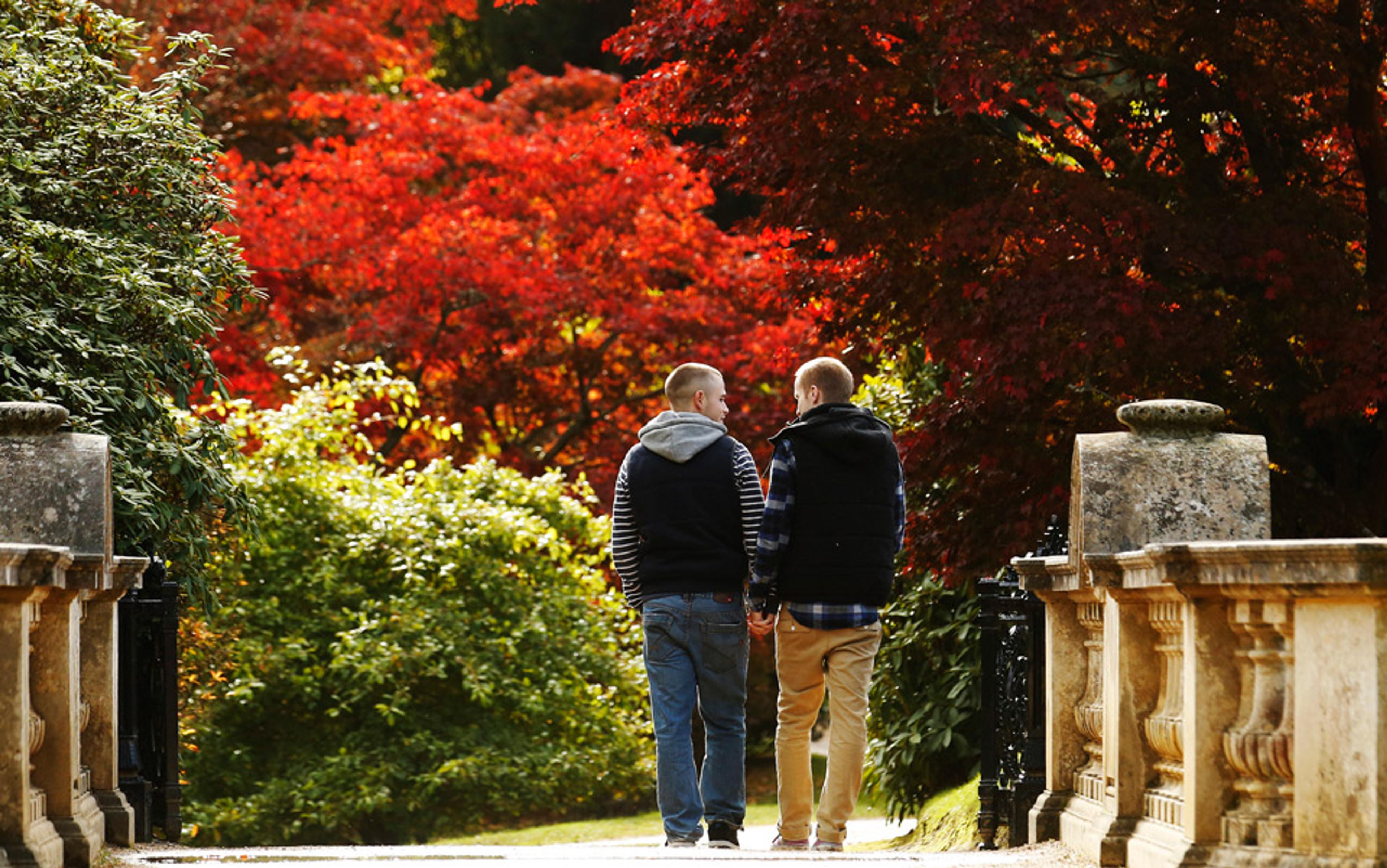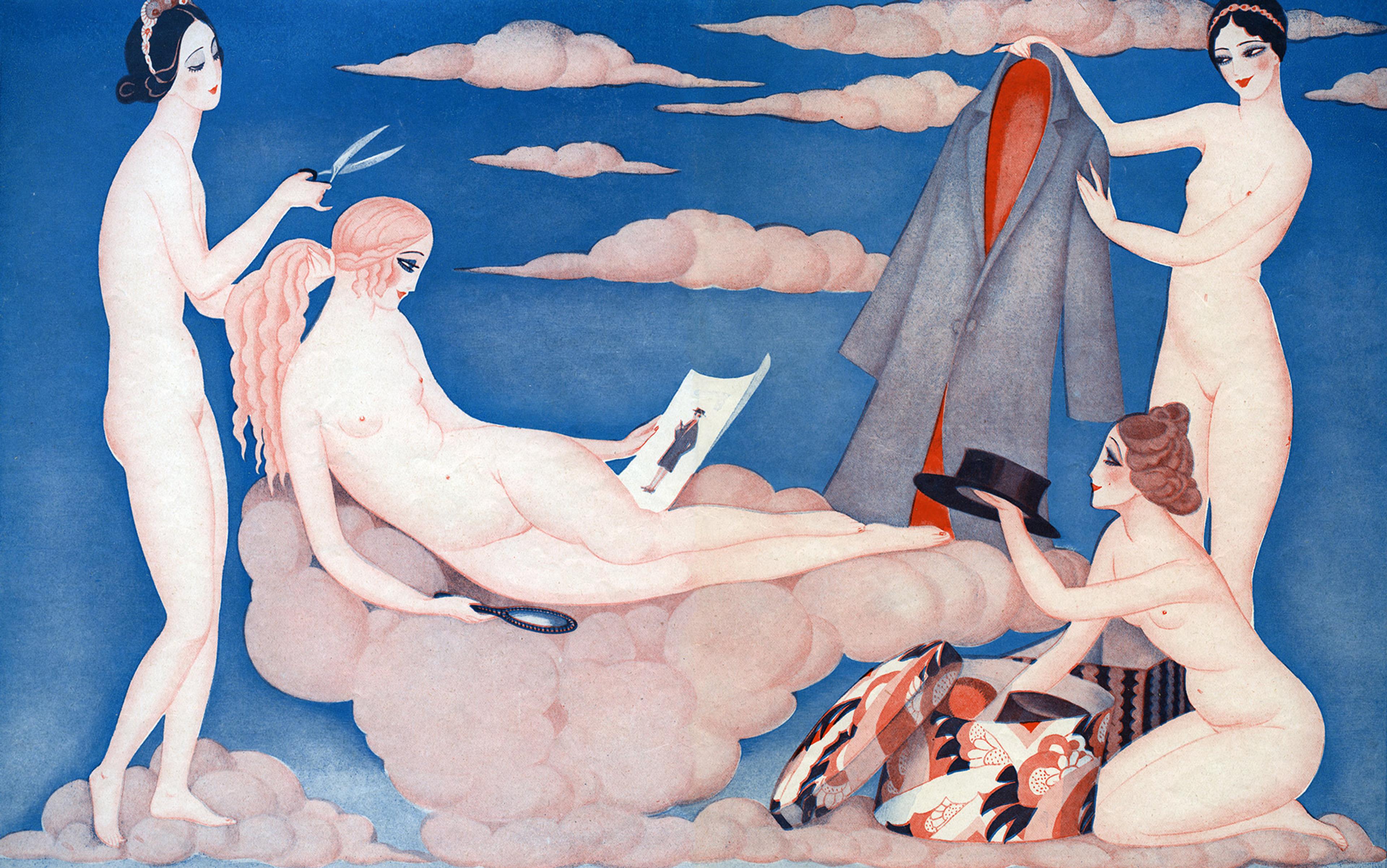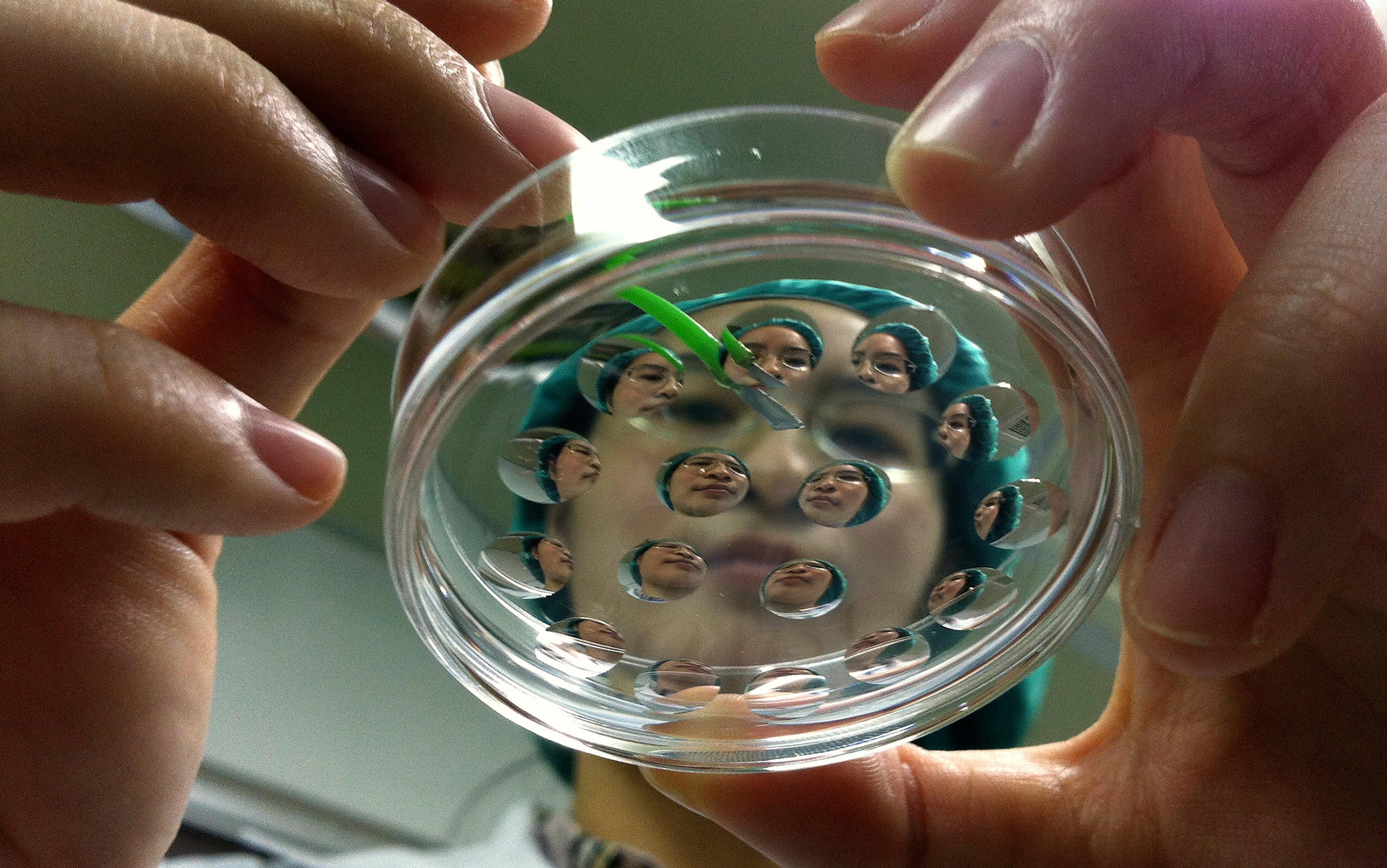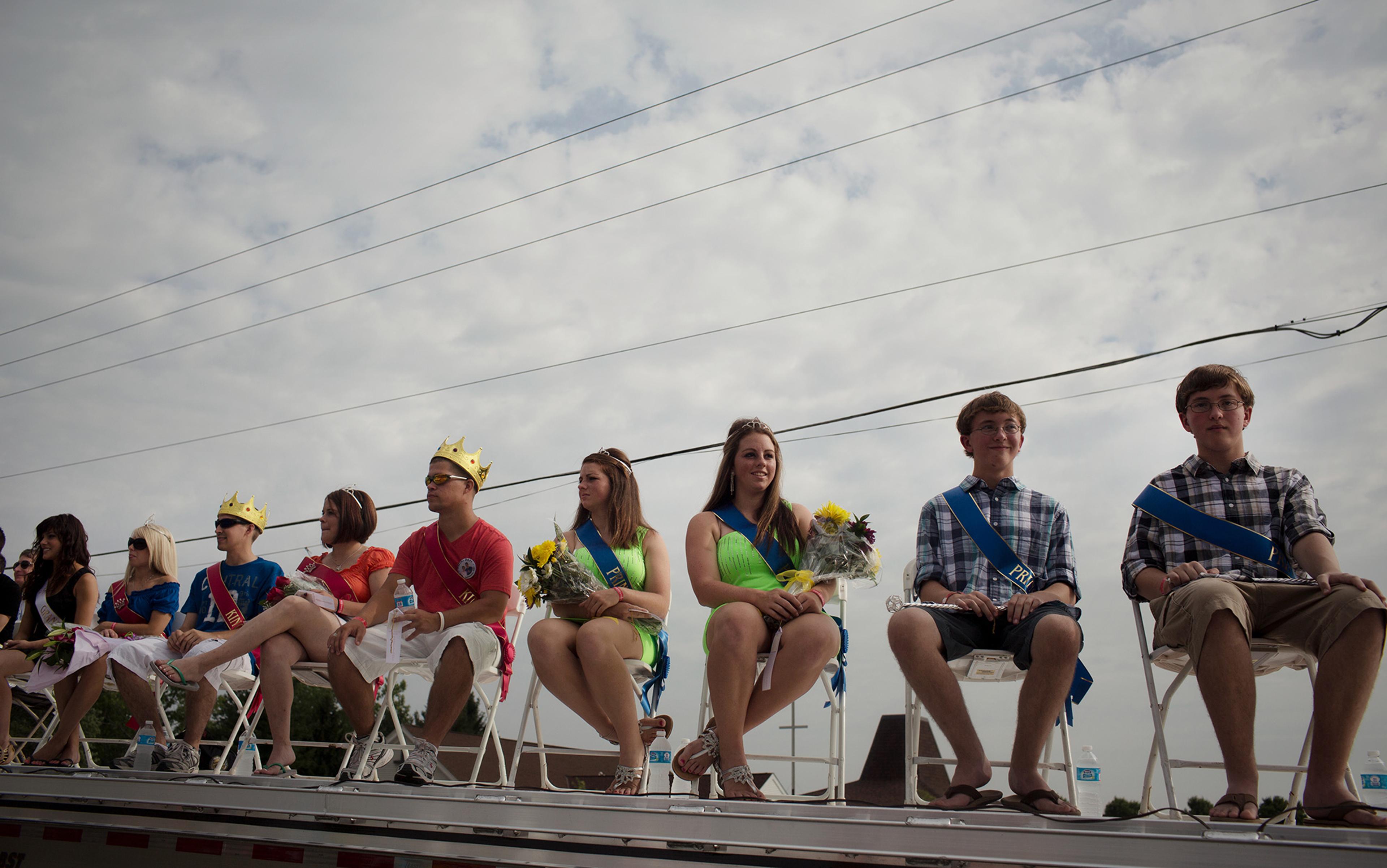Last month, the US Supreme Court affirmed the rights of same-sex couples to marry. The decision was a major achievement for a liberation movement that began nearly half a century ago. Throughout the struggle for marriage equality, supporters drew parallels with the oppression of African Americans, be that anti-miscegenation laws or legalised segregation. Yet one stark difference between these civil rights movements has escaped notice.
African-American activists aggressively called out arguments about genetic and biological differences as legacies of racist, Nazi science. By contrast, the marriage-equality movement has embraced biological determinism. Gay and lesbian activists have led the way popularising the idea that identity is biologically determined.
The proffered perspective is that sexuality is not a choice, but a way we are born. Getting Americans to believe this was a struggle. In 1977, according to the first Gallup poll on the question, only 13 per cent of Americans believed people were born gay. Even in 1990, only 20 per cent thought of sexuality as biologically innate. Yet since 2011 support has spiked, and today just under half of Americans think that the sexuality of gays and lesbians is determined at birth. Support for gay marriage and support for the idea of being ‘born that way’ closely track one another.
While this biological determinism of sexuality has been associated with a great triumph for the gay-rights movement, it’s been a great loss for our public discourse. The battle for gay marriage has been won, and other, even more challenging battles lie before the lesbian, gay, bisexual and transgender (LGBT) movement. To succeed in them, activists and scholars must abandon the fundamental fiction they have propagated. The false belief in biological determinism does considerable damage. It marginalises some of the most precarious members of the gay community, such as the transgendered; it limits our capacity to discuss what makes a good and just community; and it leads many of us to misunderstand ourselves and society.
In 2015 the ‘Born This Way’ slogan served a progressive cause, but a more historically informed perspective on the idea is troubling. Biological determinism has had a long career of serving oppressive and deadly cases; to the millions who have been subject to its horrors, its sudden emancipatory role would come as a shock. It was only a few decades ago that genetic difference was a way to identify and exterminate. Nazi science was committed to uncovering the genetic differences associated with perversion, be that Jewishness, homosexuality, the Romani, people of colour, the mentally ill, or others deemed ‘born that way’.
To the Nazis, immutable genetics required a programme of extermination; in a very different context, the genetics of ‘difference’ require acceptance. But both share the presupposition of biological determinism: that genetics determine identity; such genes must result in either elimination or embrace. This suggests why the activist alliance with genetic determinism yielded such successful results.
Moving people to understand sexuality as being genetically determined took not just activism, but scholarly research. The first major step came in 1990 when the neurobiologist Simon LeVay, then at the Salk Institute for Biological Studies in California, autopsied 41 individuals: 19 self-identified gay men, 16 straight men, and nine women. LeVay dug deep into the brain. Earlier research had shown the brain cell group INAH3, the third interstitial nucleus of the hypothalamus, to be associated with sexual attraction among rats. For males, this area is considerably larger than it is for females because male rat foetuses are exposed to higher levels of testosterone than females. If its size explained attraction, LeVay reasoned, then we might expect gay men to have smaller INAH3 than straight men.
The gay men LeVay examined had died of AIDS, as had one-third of the straight men autopsied. The ‘gay plague’ motivated researchers across the world to better understand the character of sexual desire. Some of this research explored the social life of gay communities, and activists were worried about shining a light upon what happened in the dark corners of bath houses. The broader American population overwhelmingly viewed gay sex as unnatural, and sexual licentiousness as perverse. Calling attention to the sexual freedom that characterised gay urban communities would do no good for the sick and dying.
But if gayness was a biologically-determined identity, then blaming the dying would be a lot more difficult. LeVay’s findings helped change the conversation; they were reported in 1991 in Science, the premier scientific journal in the world. Gay men’s INAH3 was closer in size to women’s than it was to straight men’s. It was a major step toward a biological understanding of sexuality.
LeVay, however, was cautious in his findings, and warned against a strong interpretation of his work. ‘It’s important to stress what I didn’t find,’ he told Discover magazine in 1994. ‘I did not prove that homosexuality is genetic, or find a genetic cause for being gay. I didn’t show that gay men are born that way …’ Yet the public power of this kind of finding was seductive. In 1993, the geneticist Dean Hamer and his colleagues at the US National Institutes of Health published findings in Science suggesting the presence of a gay gene. Noting that maternal relatives of gay men were more likely to have same-sex attraction than paternal relatives, Hamer posited that something on the X chromosome must be driving same-sex attraction. Hamer found that gay brothers were likely to share DNA markers on Xq28.
Caution fell away. Gay men, demonised as moral degenerates and ravaged by the AIDS crisis, had a rallying cry. It wasn’t their fault. Or their mother’s. They were ‘born that way’. Eventually, the phrase would even have an anthem all of its own, working its way from scientific journals to movements around the world. In 2011, Lady Gaga’s song ‘Born This Way’ topped the charts in no fewer than 23 countries, and the album of the same name sold more than six million copies. The song hypnotically exclaimed the phrase ‘born this way’ 27 times, celebrating what had become orthodoxy within the gay and lesbian movement:
You were born this way
No matter gay, straight or bi
Lesbian, transgendered life…
The problem is that we weren’t, in fact, born that way. For genes are not solely determinate of outcomes. Both my parents, for example, are 5’3”. My genetic material determined my height only in conversation with the context of my upbringing. Whereas my parents grew up in developing nations, I was raised in New York, where food was plentiful and diseases largely managed. Because of such conditions, I stand a full nine inches taller than my parents.
Desire might be biologically driven, but it moves on tracks laid forth by human culture
One of the simplest truisms of biology, taught in its earliest introductory courses, is that genes interact with environmental and social conditions to generate outcomes. Scientists and social scientists alike know this well, and have shown it time and again, even in relationship to sexuality. In 2002, examining the ‘gay gene’ hypothesis, the sociologists Peter Bearman at Columbia University and Hannah Brückner, then at Yale, showed that genetic expression did indeed influence same-sex attraction, but only under certain social conditions.
It is notable, then, that biologists, social activists and scholars have not just tolerated a fiction, but in many instances propagated it. The likely reason is that undermining the genetic determinism of sexuality is seen as terribly dangerous. For if sexuality is not determined, then what is it? For many, the answer is simple: it must be a choice. And the result of viewing sexuality as a choice is far more politically damaging than the lie of biological determinism. It means that LGBT people must have to defend their practices from accusations about their immorality. They must articulate arguments for why their practice is different from that of, say, the polygamist, the paedophile, or the bestialist.
Yet such unpalatable justificatory demands emerge only because both sides of this debate have backed themselves into corners. In order to avoid any discussion of the legitimacy of LGBT sexual expression, activists settled on the powerful rhetoric of biological determinism. In countering this claim, critics of the LGBT community have drawn upon the dominant US ideology of free choice. We live strung between either the naïve fantasy of pure choice or the absurd determinism of none.
There is another way. It will not satisfy those who wish that we would all unquestioningly accept that sexuality is, simply, a natural phenomenon, nor will it placate those who wish to identify the LGBT community as a symptom and cause of moral ills. Yet it is more accurate as a description of the biology of sexuality and its social nature. Desire might be biologically driven, but it moves on tracks laid forth by human culture.
Academics call this idea – that actions are often neither determined nor the result of free choice – ‘social constructionism’. Among the intelligentsia, it is a sacred truism that race and gender are such constructions. Is human skin tone biologically determined? Mostly. But that is a long way from the ersatz conclusion that race is a biological entity. The process of making differences in skin tones and bodily features into ‘race’ is a social act. That act has a past – the slave trade and its consequences, colonisation, scientific categorisation. It also has a present. As Barack Obama ascended to the US presidency, we saw a remaking of racial possibility and understanding. Recent events in Ferguson, Baltimore, Charleston, and the #Blacklivesmatter movement against state violence towards black Americans, continue to remake and transform the meaning of ‘race’.
When demonstrating that something we see as natural is in fact a social construction, history and cultural difference tend to be the scholar’s tools. If race is a biologically determined entity, we would expect it to be the same across time and place. But the Greeks did not have the concept of ‘race’. Their explanations for human difference tended towards the environmental: heat and cold made a difference in skin tone. It was not until more modern systems of scientific classification, combined with European geographical exploration and colonisation, that we began the great process of categorising people by race, and seeing such a category as a biological inheritance.
Since the ancient Greeks, science has advanced tremendously. Perhaps our improved knowledge has brought us closer to the truth of race – a truth that evaded our ancestors who could not even imagine the magic of genetics or its scientific power. To evaluate this proposition, scholars look cross-culturally. What they find is that race is lived differently across societies. Take Brazil. A popular idea among Brazilians is that ‘money whitens’. As men and women move ‘up’ the class ladder, they become whiter (particularly their progeny). Yet how can a change in one’s social status change one’s biological race? The answer, reached by biologists and social scientists alike, is that race is not a biological concept, but a socially-constructed one.
This does not mean that biology does not matter. Genetics is central to explaining our behaviour, and those who deny the impact of genetics do so at their peril. When scholars say that gender is a social construction they don’t mean that there are no biological differences between the sexes, nor do they mean that biology has no influence on behaviour. What they mean, in part, is that genetic impulses express their meaning through human culture. In the 16th century, Holbein painted King Henry VIII as the paragon of masculinity. He stands before us in form-fitting leggings and what, to our modern eye, seems to be a short skirt. Were I to wear such an outfit today, it would be read as a form of drag.
sexuality is a physiological desire whose expression is socially constructed. Some of that construction turns desire into love
Men and women of a generation ago saw all kinds of housework as deeply feminising. Today, though men still do less housework than women, not engaging in the fundamental care of children is to shirk on one’s masculine duties. Male expression and even masculine action is bound less to the genetic determinants of ‘maleness’ and far more to the cultural logics of masculinity. Were they magically transported to another land and time, most modern men would have a hard time performing appropriate masculinity. This is not because of some fault in their core ‘maleness’. It’s because the social expression of the fact that they have a Y chromosome is not built into their DNA, but into their society and culture.
While race and gender are widely understood as social constructions, sexuality has a relatively different status. Academics often pay lip service to sexual identity as a social construction, but publicly have refrained from challenging biological determinism, perhaps for fear of derailing the tremendous triumph of the gay-rights movement.
The basic tools of history and cultural difference upend the biological determinism position on sexuality just as they do on race. If sexual identity is biologically determined, we should find evidence of what we today define as gay men or women in our past, as well as across different cultures. As we begin such an exploration, we see that ‘gayness’ – which I define as a permanent and self-defining same-sex attraction that constitutes a distinct social identity – is very rare. We certainly find countless examples of what I would call ‘queerness’ – or of sexual expression that does not fit what is today’s norm. This includes same-sex sex and even relationships, but also pederasty, polygamy, pan-sexuality, transgender and ‘third-gender’ expression, and many practices that are difficult for my contemporary American sensibility to comprehend. But while gayness can be a kind of queerness, it’s a small subcategory. Gayness is an almost exceptional expression, mostly limited to contemporary Western life; this plants serious doubt upon the idea that it is biologically determined.
Some might think of the Greeks and note that they practiced gayness. But their sexual expression would disgust most of us, for it was pederasty (παιδεραστία, meaning, ‘love of boys’), not contemporary gayness. Adult men would enter into sexual unions with pubescent boys, with men typically performing what they considered the ‘masculine’ or ‘active’ sexual role. The passive role was mostly limited to the subordinate – youths or women. The relationship was not limited to sex, but entailed a moral and cultural education of these young boys. The sexual aspects of these relationships almost always ceased as youths grew older. To claim temporary pederasty as historical evidence of the immutable and permanent gayness is, at best, a stretch.
We do, however, find such pederasty in many cultural contexts. The practice existed in Spain under the Moors, in some areas of Italy during the Renaissance, and throughout areas of the Middle East and China at different time periods. While such commonality might lead some to believe that this is evidence of a fundamental biological drive, such thinking is inaccurate. For the Greeks, pederasty was a form of moral education which could either involve sexual contact or not – such expression most often was limited to boys (not men); to the Chinese, it was rather limited to prostitution; to the Romans, penetration was allowed only against slaves, and violating this strict rule could result in extreme punishment. In most of these instances, sexual relationships between male adults were forbidden. We find a variety of sexual acts and relationships across time and place, but we almost never see the social identity of gayness.
The biological commonality here, if there is any, is sexual desire; the tracks of that desire – how it is expressed and what it meant – vary from time and place. The implication is that sexuality is a physiological desire whose expression is socially constructed. Some of that construction turns desire into love. Some of it converts desire into pederasty. Some of it converts desire into power, either through sexual domination (being dominated), or through the acquisition of multiple wives. The radical implication is that there is nothing natural about love, particularly as the basis of marriage. But there is nothing ‘normal’ about human sexuality more broadly, whether it is heterosexuality or homosexuality.
True, many gay and lesbian people will note that they ‘always felt different’ or that they knew about their homosexuality for as long as they’ve been aware of themselves as sexual beings. Is this not evidence of a powerful biological drive? Not necessarily, because it is also consistent with the idea of sexuality as co-determined by biology and environment. Race is a social construct, and its experience is felt from the moment we begin our lives. Two common mistakes we often make when thinking about social constructions are to imagine that because something is socially constructed it isn’t real, or that it’s easy to change. Money is a social construction; its value and meaning are contingent not on its inherent quality but instead on what we ascribe to it. A physical dollar has no real value – its value is in the fact that we collectively acknowledge it. If you think that things that are socially constructed aren’t real then I propose you give me all of your money. The reason you’re not going to do that is because even though it might be socially constructed, money has deeply material consequences; the same can be said for most social constructions.
Often our biology is more mutable than our social constructs. We can change our gender assignment, the presence or absence of hair and its colour; we can augment and remove, enhance and make youthful, fundamentally transform. We can become fatter or thinner, muscular or soft, grow and embellish our nails or remove them. We age, surely. But even this experience and its effects we have altered.
Social constructs are another matter; their transformation requires moving mountains of people, many of whom have commitments to, and define themselves by, their present location. Were I to dress, quite regularly, as Henry VIII, I would be unlikely to transform our conceptualisations of masculinity. And this is not because I don’t have a big enough stage. Were Clint Eastwood to engage in a similar project, he would be more likely to find his mental health questioned than to transform our collective understanding of masculinity.
Of course, social constructs do change. They are always shifting, in often nearly undetectable ways. The formation of ‘gayness’ – of gay identity itself – has been a gradual transformation of the structure of sexuality. Rather than be a kind of act that men and women engaged in (as it once was), same-sex attraction has become a kind of person you are. In essence, homosexual went from being an adjective, describing certain actions, to a noun – a kind of person. A permanent, encompassing, immutable identity. Part of this process was a slow development over the late 19th and through the 20th century, and part of it was accelerated by the AIDS crisis, which made certain sexual practices in late-20th-century urban subcultures deadly. Yet it would be nearly impossible to clearly identify a source, cause, event, or person behind this process.
The arrangement of sexual relations is the key social building block of society’s reproduction. Hence the importance of gay marriage
The position I offer, then, is a subtle one. ‘Born that way’ is a simple mantra, one that cuts through the concepts and challenges I have outlined. But it is also dangerous. For embracing the fiction of biological determinism risks consistently misunderstanding the most important part of our lives – our intimate relationships. We invented romantic love. And homosexuality. And just about every other kind of relationship. That doesn’t make any of these things less important or less real. But our inventions are not part of a biological nature: they are part of a conversation between a biological and social order of life.
Without this more accurate understanding, it is easy to avoid fundamental questions of human society. If biology determines our expression, then there is no reason to think about making better or different worlds. It has all been decided, from the moment we became Homo sapiens. Yet if we recognise sexuality as constructed, we open up essential discussions about some of the most important aspects of life. Who are we sexually intimate with, and how? What do we do with the consequences of sexual intimacy (offspring and health)? Who is responsible for children’s lives, development and education in a society? The arrangement of sexual relations is the key social building block of society’s reproduction. Hence the importance of gay marriage. Yet we have a surprisingly limited way of engaging this conversation; indeed, biological determinism helps us avoid the issue altogether. A host of social issues are pressing down upon us, and we cannot effectively address them if we deny the reality of the human condition, including sexuality, and thereby close off discussions before they begin.
Some of these concerns apply directly to the gay-rights movement. There are many people who might be called members of the LGBT community for whom marriage is not the greatest concern – fundamental respect of their being has yet to be achieved. For political gains, the supporters of same-sex marriage have promoted a false and dangerous argument that does nothing to help the most marginal members of the LGBT community. From the perspective of biological determinism, how do we make sense of transgender and transsexual people? How do we understand those whose biology and sense of self does not match? Or whose biology does not match our limited categories of understanding?
If sexuality is not determined, but mutable, we should make arguments in favour of those sexual practices and identities we value, and condemn those kinds of sexuality that we find abhorrent. This opens up a space for conservative arguments against homosexuality. So be it. For such an opening also allows me to vehemently reject pederasty. Knowing it was accepted in many societies before does nothing to change my position. And the reason behind my rejection – pederasty is built upon a power relationship where consent is impossible – supports the positive case for embracing the LGBT community.
What concerns me as much as conservative condemnation of homosexuality is the credence liberals have given to a false idol of bad science. Liberals should meet conservatives on the terrain of what is good for society. As they do so, they will force conservatives to sacrifice the sacred cow of individual choice, and begin to recognise that society exists and is valuable. And everyone will have to acknowledge that their sexuality is no different than the homosexual’s – driven by desire, and moulded by society.






